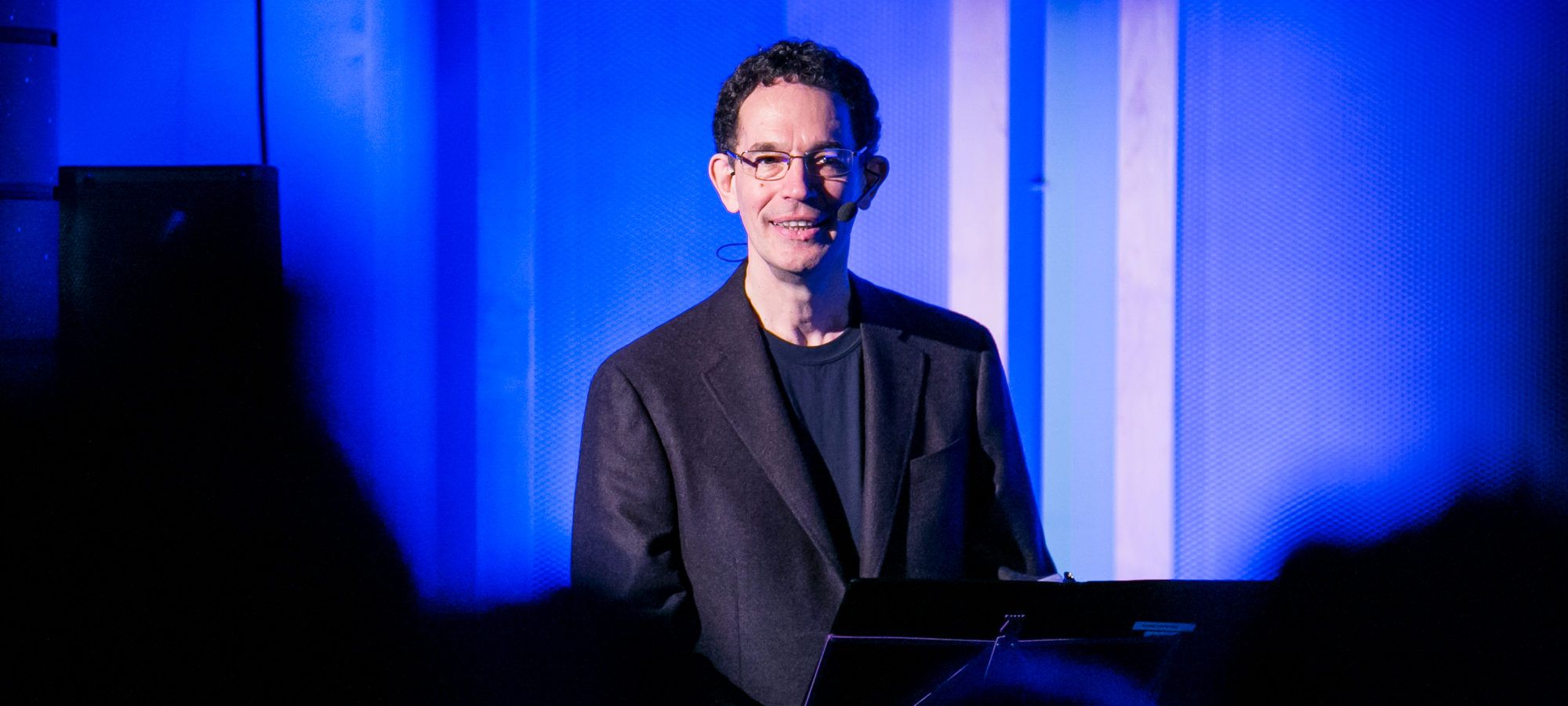We are innovators
As a cosmologist, I’m often asked whether studying the universe is at all relevant to our everyday lives and concerns. My answer: completely!
Take a self-guided tour from quantum to cosmos!
As a cosmologist, I’m often asked whether studying the universe is at all relevant to our everyday lives and concerns. My answer: completely!

Our knowledge of the laws of motion, electricity, and light made airplanes, computers, and wireless communication all possible. We learned all these things from trying to make sense of the universe. Solving today’s great mysteries in physics, like what banged at the big bang, what the dark energy or dark matter is made of, and how quantum theory governs space and time, will, I believe, open doors to unimaginable new technologies.
Our ability to comprehend the workings of nature, and to apply that knowledge with ingenuity to improve our world, makes us who we are. We contemplate and imagine, experiment and observe. When we understand, we design, and we make. In doing so, we continually reshape the world. We are innovators.
Innovation is a buzzword these days – but it’s much more than that. It’s an essential aspect of our existence, and a tool we need more than ever. Consider the many challenges we face, from the lack of resources and opportunities, to environmental damage and the marginalization of communities, to increasing nationalism and prejudice, “fake news” and a loss of confidence in expert opinion. Our best hope in tackling all of these problems lies, I believe, in encouraging young people to become self-confident and knowledgeable critical thinkers and capable innovators.
That’s why Innovation150 is one of the themes of Canada 150, the sesquicentennial celebration. Perimeter is playing a big part, as you’ll read in the pages ahead. For my part, I am in the midst of a six-city cross-Canada tour, delivering a talk called “We Are Innovators.” By shining a spotlight on Canada’s potential to foster innovation, I hope to encourage all Canadians, especially Canadian youth, to better understand the world and to effect positive change both at home and abroad.
What does it take to be an innovator? As a handy mnemonic, I use four Cs: curiosity, courage, creativity, and collaboration. Everyone sees these traits differently; as a physicist, I am inspired by the pioneers of our field.
The playful curiosity of a young Michael Faraday, an apprentice tinkering in his mentor’s lab, led to the first electric motors and generators – and, eventually, to Maxwell’s understanding of electromagnetism, which allowed radio, radar, and the mobile communication revolution.
The courage of Marie Skłodowska Curie, a young Polish woman who overcame extreme prejudice to pursue Nobel-winning research in both physics and chemistry, and whose discoveries helped launch the quantum revolution that shaped 20th-century physics, as well as many techniques for medical diagnosis.
More recently, the creativity and collaboration of Art McDonald and his SNOLAB team enabled them to transform a nickel mine two kilometres underneath Sudbury into a world-leading neutrino observatory. It allowed us to see processes deep in the heart of the sun, giving us a new window onto physics at very high energies, and earning Art a share of the 2015 Nobel Prize. (Art, who is also on Perimeter’s Board of Directors, shares his thoughts about innovation and science with us in this issue.)
What all of these innovators share are traits we are all born with – curiosity, courage, creativity, and a collaborative spirit – combined with an intense focus on discovering the truth. But discovery is only part of the equation. Equally important is using innovations wisely, for the betterment of everyone. Social innovators who overcome divisions and improve the way we live together are every bit as important as scientists, technologists, and entrepreneurs.
Here in Canada, I see a special opportunity. Canada’s diversity and tolerant culture – of peoples and of ideas – is a source of strength; it is often at the intersection or collision of alternative viewpoints that innovation takes place. It is vital that we reinforce Canada’s strength as a place where diversity is cherished and understood as a driver of progress – a place where talent is valued, wherever it arises, and where every person is empowered.
I believe the world’s current crises provide Canada with an opportunity to attract the best and brightest minds and to become a global knowledge leader. This happened in 17th-century Holland, where the invention of the telescope and microscope fuelled the scientific renaissance; it happened in 18th-century Scotland, with the emergence of luminaries like Adam Smith and David Hume. Likewise, in the 21st century, I believe the world may come to look at Canada as the place where our collective future is imagined.
This will not come without effort and commitment, and there is much to be done. The whole of society needs to lend its energy to supporting innovation. This spans schools, communities, universities, companies, unions, government – everyone.
Perimeter is proud to be a part of this. We connect students and teachers to modern science. We connect visionary philanthropists with cutting-edge research. And of course, as scientists, we work to open up new paths on which we can all journey toward a deeper understanding of the universe.
Every day, Perimeter reminds me of why I love physics. It rewards curiosity, creativity, courage, and collaboration with the most precious of all things: the capacity to shape our destiny.
Ask any public health expert: testing is key to beating COVID-19. Perimeter’s Neil Turok is working with colleagues from the African Institute for Mathematical Sciences on a new way to test more people with fewer tests. Their work was just published in Nature.
What drives us is our unbridled curiosity and appreciation of the extravagant beauty and simplicity inherent in nature.
A century ago, Emmy Noether published a theorem that would change mathematics and physics. Here’s an all-ages guided tour through this groundbreaking idea.